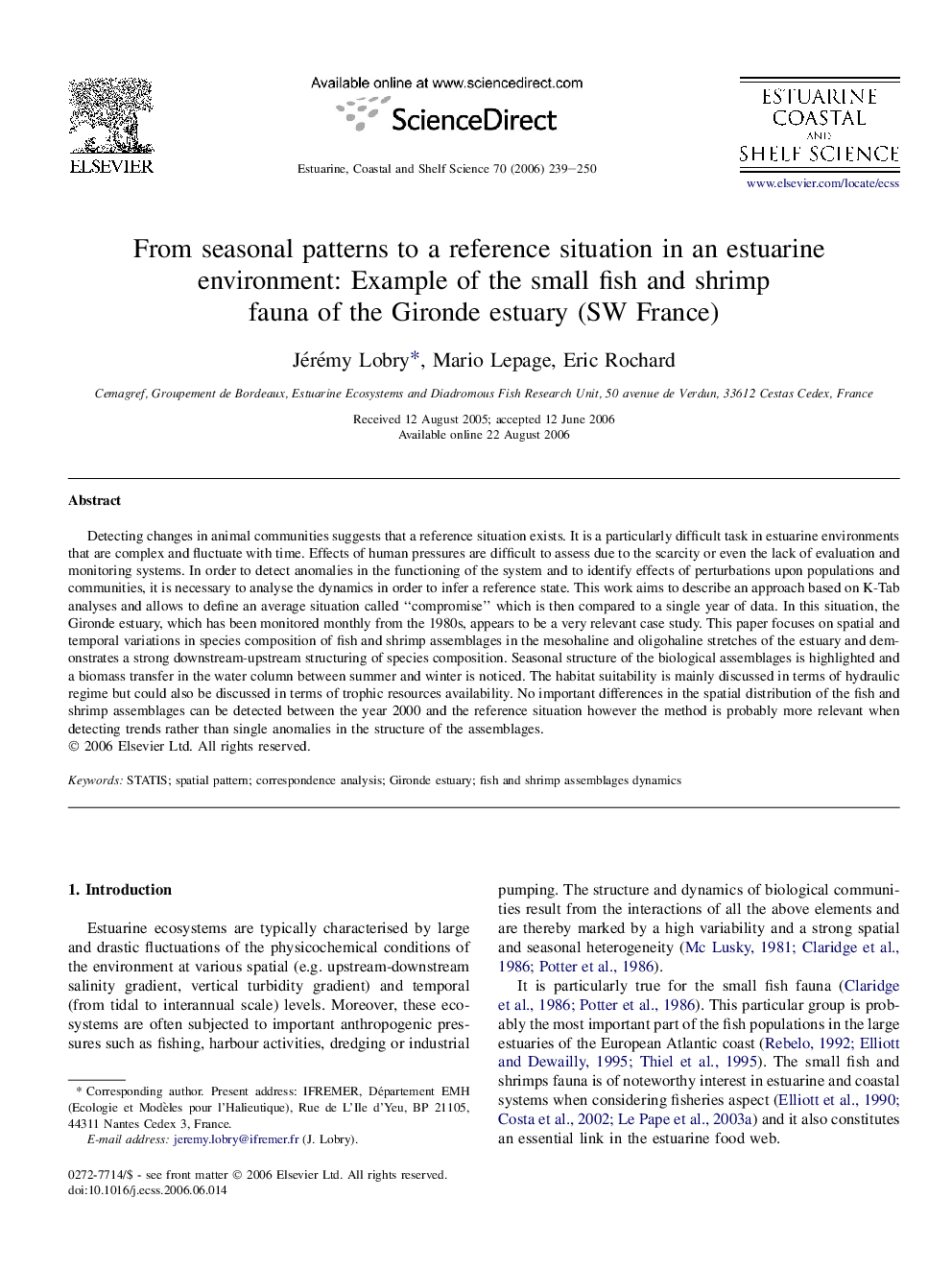| Article ID | Journal | Published Year | Pages | File Type |
|---|---|---|---|---|
| 4542475 | Estuarine, Coastal and Shelf Science | 2006 | 12 Pages |
Detecting changes in animal communities suggests that a reference situation exists. It is a particularly difficult task in estuarine environments that are complex and fluctuate with time. Effects of human pressures are difficult to assess due to the scarcity or even the lack of evaluation and monitoring systems. In order to detect anomalies in the functioning of the system and to identify effects of perturbations upon populations and communities, it is necessary to analyse the dynamics in order to infer a reference state. This work aims to describe an approach based on K-Tab analyses and allows to define an average situation called “compromise” which is then compared to a single year of data. In this situation, the Gironde estuary, which has been monitored monthly from the 1980s, appears to be a very relevant case study. This paper focuses on spatial and temporal variations in species composition of fish and shrimp assemblages in the mesohaline and oligohaline stretches of the estuary and demonstrates a strong downstream-upstream structuring of species composition. Seasonal structure of the biological assemblages is highlighted and a biomass transfer in the water column between summer and winter is noticed. The habitat suitability is mainly discussed in terms of hydraulic regime but could also be discussed in terms of trophic resources availability. No important differences in the spatial distribution of the fish and shrimp assemblages can be detected between the year 2000 and the reference situation however the method is probably more relevant when detecting trends rather than single anomalies in the structure of the assemblages.
